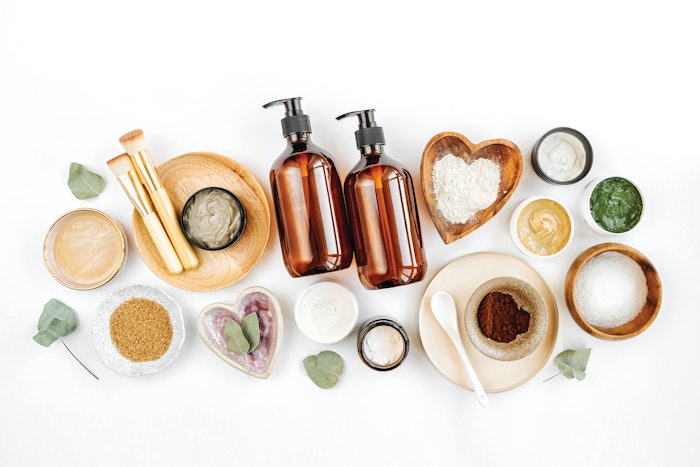
The trend of "custom mixology" or "cocktailing" treatment products has taken the skin care industry by storm, enabling skin care professionals to craft hyper-personalized treatments that address the unique needs of every client. This approach elevates the esthetician’s role from skin care specialist to “chemist,” creating bespoke experiences based on each client’s skin type, conditions, and evolving needs. Let’s dive into the science behind mixology, explore key ingredients, and discuss how this trend benefits spa businesses and their clients.
The Business Advantage of Customization
Offering tailored treatments not only enhances client satisfaction but also strengthens your reputation for expertise and personalization. Choosing product lines that support safe mixology practices allows estheticians to adjust each element of the facial—from cleansing to serums—based on the client’s current skin concerns. This unique approach, grounded in science and precision, positions a spa as a destination for high-value, personalized services that treat the skin based on the client’s current conditions, as we know, it can vary significantly with hormones, environmental changes, and client concerns.
Customizing Key Elements of a Facial
When using a mixology bar in your treatment room, or offering a custom mixology facial, each step offers opportunities to address specific skin types and conditions from cleansing to exfoliation, and masking to finishing products. When cleansing, it’s important to use a cleanser that removes makeup and allows you to get a good look at the skin for assessment on how to proceed. Whether you do your second cleanse with a gentle or active cleanser can be chosen based on skin type after. For oily, acne-prone clients, a salicylic acid cleanser may work well for a first cleanse. Sensitive clients may need a mild, hydrating cleanser with soothing ingredients like aloe or chamomile.
When customizing your exfoliation, it’s important to look at how reactive the skin is with the double cleanse as a first rule of the thumb. If you see any redness or reaction to any actives in the cleanser, you’ll know to proceed with a milder exfoliant.
Exfoliants like alpha hydroxy acids (glycolic acid and lactic acid, for example) and enzymes are great options depending on the skin type. Acne-prone clients can benefit from salicylic acid, while aging or hyperpigmented clients will benefit from AHAs. Enzyme exfoliants like bromelain or papain, can be gentler for sensitive or dry skin types.
Customizing masks through mixology brings an elevated, highly personalized touch to any skin care routine, enabling estheticians to create tailored treatments that address the unique needs of each client’s skin. By blending different masks and ingredients, estheticians can layer benefits like deep hydration, pore-cleansing, and brightening into one session, amplifying results and maximizing the efficiency of each facial. A hydrating mask with hyaluronic acid is perfect for dry skin, while a clay-based mask with kaolin can clarify oily or acne-prone skin. This mixology approach allows for targeted customization, especially for those with complex skin issues—such as acne combined with hyperpigmentation, or aging with sensitivity—can receive a precisely tailored experience.
The combination of serums and moisturizers enables layering actives, like peptides for anti-aging or niacinamide for brightening, in a way that adapts to the client’s needs during a facial. You can add a few drops of one serum and another to combine in the palm of your hand to mix. Then gently press into the skin, and after you can add an appropriate moisturizer based on skin type.
Safe Customization Tips
Safe mixology relies on skill and understanding of each ingredient’s potential and a product’s profile. Certain ingredients should not be mixed due to potential irritation or diminished effectiveness. For instance, retinoids and acids like glycolic acid may increase sensitivity when used together, so apply these in separate sessions or different areas of the face.
For clients with multiple skin needs (like combination or acne-prone skin), map the face into zones and treat each with a targeted product. For instance, a purifying mask can be used on the forehead and nose, while a hydrating mask is applied on the cheeks.
Layering products with active ingredients can be powerful but requires caution. For example, pairing hyaluronic acid with vitamin C can enhance brightening and hydration, while combining niacinamide with salicylic acid can reduce redness and inflammation. . Each product’s pH level impacts how it works with others. For example, vitamin C, which is acidic, should not be used immediately before or after an alkaline product. When mixing, be cautious about pH-dependent ingredients like vitamin C and acids. A mismatched pH can make certain actives ineffective or become super irritating. Also, a good rule of thumb is that while mixing within a single product line is generally safe, mixing products from various brands with different formulations may lead to unexpected reactions. Sticking with one brand’s compatible products can reduce risks and ensure predictable outcomes. When in doubt, always focus on client safety first and check with your product line to know how to customize safely.
Ingredient Synergies for Different Skin Types and Concerns
Ingredient synergy can play a pivotal role in maximizing results with a custom approach. Here are a few beneficial pairings that can be safely layered in most facial applications to elevate results.
Peptides with Antioxidants. This pairing supports collagen synthesis while protecting the skin from environmental stress. Peptides promote cellular repair and renewal, while antioxidants like vitamin C or E shield the skin from oxidative damage.
Hyaluronic Acid with Ceramides. This combination enhances the skin’s moisture barrier. Hyaluronic acid attracts moisture, while ceramides help retain it, making the skin plump and smooth.
Niacinamide with Exfoliants. Using niacinamide before or after gentle exfoliants, like lactic acid, can reduce inflammation and strengthen the skin barrier. This combination allows for exfoliation without the risk of excessive irritation.
Acne-Prone Skin Ingredients
For clients with acne-prone skin, especially if it’s oily, custom mixology focuses on ingredients that regulate sebum, reduce bacteria, and minimize inflammation.
Salicylic Acid. This beta hydroxy acid (BHA) penetrates the pore lining, dissolving oil and dead skin. It works well alongside niacinamide to reduce redness.
Niacinamide. Known for its anti-inflammatory and sebum-regulating properties, niacinamide pairs well with salicylic acid for a more balanced treatment.
Azelaic Acid. This multi-functional ingredient helps reduce redness, brightens post-acne marks, and has antibacterial properties.
Combination Tips. In a mixology bar setup, an esthetician might combine salicylic acid in the cleansing phase, then follow with a niacinamide serum to soothe and regulate oil production. Avoid layering strong actives like salicylic acid with retinoids to prevent excessive drying or irritation.
Acne with Hyperpigmentation Skin Ingredients
This skin type benefits from ingredients that not only treat acne but also lighten post-inflammatory hyperpigmentation.
Mandelic Acid. This gentle AHA also has antibacterial properties, ideal for targeting acne and hyperpigmentation without over-drying.
Vitamin C (Ascorbic Acid). Known for its brightening effects, Vitamin C can help fade dark spots. It pairs well with mandelic acid for its brightening synergy.
Combination Tips. An exfoliant with mandelic acid can start the treatment, followed by a vitamin C serum. Be cautious with pH levels to ensure both ingredients work effectively without irritation.
Aging Skin Ingredients
Aging skin requires ingredients that stimulate collagen, protect from oxidative stress and maintain hydration.
Peptides. These amino acids support collagen production, helping to reduce the appearance of fine lines.
Vitamin C. This antioxidant helps combat environmental stress and brightens the skin, complementing peptide treatments.
Hyaluronic acid. Known for its ability to retain moisture, hyaluronic acid is essential in addressing dehydration common in aging skin.
Combination Tips. After exfoliation or masking, a peptide serum layered with hyaluronic acid can support moisture and elasticity. For clients with aging skin who also experience hyperpigmentation, vitamin C can be layered before hyaluronic acid.
Aging with Hyperpigmentation Skin Ingredients
In this case, estheticians must target both collagen loss and dark spots with a combination of gentle brighteners and anti-aging ingredients.
Retinoids. These vitamin A derivatives boost cell turnover, which helps reduce pigmentation and fine lines.
Tranexamic Acid. Known for its brightening effects, it reduces dark spots without irritating aging skin.
Combination Tips. A gentle retinoid serum followed by a tranexamic acid serum can effectively address both issues, but avoid using these together in the same session if the client has sensitive skin.
Sensitive Skin Ingredients
For clients with sensitive skin, avoid harsh or overly active ingredients. The goal is to soothe and strengthen the skin barrier.
Ceramides. These lipids help restore the skin barrier, making them ideal for sensitivity.
Panthenol (Vitamin B5). A soothing, hydrating ingredient, panthenol calms redness and supports skin barrier repair.
Calendula Extract. A natural anti-inflammatory, calendula reduces redness and soothes irritation.
Combination Tips. After a gentle cleanse, and upon completion of enzymes or oxygen treatment, a ceramide-rich moisturizer can be mixed with a serum containing allantoin, squalane, green tea, or other calming ingredients for extra soothing. For sensitive clients with acne, consider adding azelaic acid also in low doses to address acne without compromising skin comfort.











